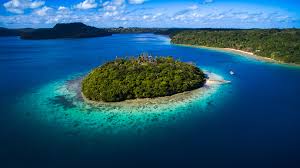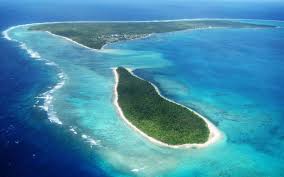



Tongatapu is the main island of Tonga, a Polynesian archipelago. The Tongan capital city, Nuku‘alofa, on the north coast, is home to the waterfront Royal Palace. Indoor and outdoor stalls at the Talamahu Market sell tropical produce plus local arts and crafts. In the east of the island is the ancient capital Mu’a, now an archaeological site with centuries-old, pyramid-like royal tombs and burial mounds. ― Google
May to October (dry season): Best time to visit. Cooler temperatures, lower humidity, and clear skies.
November to April (wet season): Warmer, more humid, and the chance of tropical storms. Rain showers are usually short and intense.
By Air: Tonga’s main international gateway is Fuaʻamotu International Airport, located on Tongatapu. Flights arrive from New Zealand, Fiji, Australia, and other Pacific nations.
By Sea: Cruise ships and ferries often stop at Nukuʻalofa, the capital and main port.
Haʻamonga ʻa Maui: A massive stone trilithon (like a Tongan Stonehenge) believed to date back to the 13th century.
Mapuʻa ʻa Vaea (Blowholes): Located on the southern coast — powerful ocean blowholes that can shoot water 30 meters into the air.
Royal Palace of Tonga: A 19th-century wooden palace in Nukuʻalofa, the symbolic heart of Tonga’s monarchy.
Anahulu Cave: A limestone cave with natural pools you can swim in.
Terraced Tombs (Langi): Ancient royal tombs made of coral slabs, found in Muʻa — the old capital of the Tongan empire.
Snorkeling and swimming at beaches like Pangaimotu or Keleti.
Explore offshore islands via boat tours to the smaller islets nearby.
Visit villages to experience traditional Tongan life and crafts.
Attend a cultural show with Tongan dance, music, and kava ceremonies.
Watch whales (June–October): Tongatapu is a great base for seasonal humpback whale watching tours.
Tongatapu offers a mix of guesthouses, mid-range hotels, and eco-lodges.
Most are in or near Nukuʻalofa, while beachfront resorts and quiet stays can be found further along the coast.
Traditional dishes include lu pulu (corned beef in taro leaves), ota ika (raw fish in coconut cream), and taro or breadfruit as staples.
Seafood is abundant — try lobster, snapper, or clams.
Local bakeries and roadside stalls sell pastries, buns, and sweet coconut bread.
A handful of international restaurants and cafés exist in Nukuʻalofa.
Tongan culture is deeply rooted in family, respect, and tradition.
The monarchy and nobility are still influential; Sunday is observed strictly as a day of rest and worship.
People dress modestly, and visitors are expected to do the same in villages and churches.
Music and dance are central to Tongan identity — especially lakalaka and tauʻolunga performances.
Kava ceremonies are an important communal activity and a sign of hospitality.